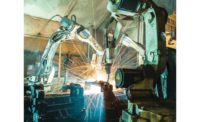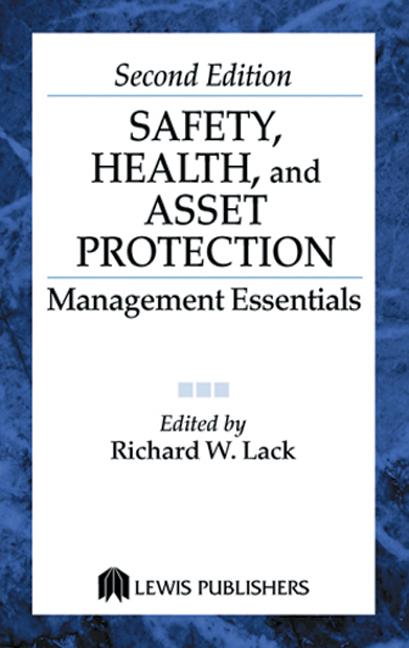Health & safety management
Managing health and safety at work has become an integrated part of today’s corporate strategy. More than 90 percent of people surveyed agree, and 76 percent state they implement an ad hoc policy, above and beyond what is required by law and regulations.
The bigger the corporation the higher the application rate, but surprisingly, 70 percent of small firms adopt specific approaches, too.
Main risks
Questioned on what the main risk areas are, participants principally identify operational aspects, with some interesting differences between the world’s geographical areas. North Americans (66%) and Swedes (55 percent), for example, are those who care most about ergonomic aspects, while the structural deficiencies of machines and equipment are perceived as a main risk area especially by Asians (54 percent).
Consequently, rather than strategically working on prevention, companies find operational initiatives to be the most effective.
In fact, the ranking of the top most effective actions is topped by the regular maintenance of premises (48 percent) and emergency measures (46 percent). Organizational issues such as the assessment of all risks related to health & safety (37 percent) and preventive measures (35 percent) are down on the list.
The most advanced are North Americans, with percentages well above average not only for the effective implementation of actions aimed at controlling operative features but of actions addressing organizational issues as well: almost 1 in 2 successfully implement initiatives to minimize the number of resources exposed to risk and 44 percent implement risk management systems. Norwegians and Swedes, instead, stand out for the attention they pay to participation and consultation of personnel on this subject (Norway 46 percent; Sweden 43 percent).
Main drivers and obstacles
Compliance with laws and regulations (87 percent) is the top reason driving firms to develop actions to safeguard health and safety at work.
Internal policies, indicated by 73 percent of professionals, come next. Occupational health and safety is a concern for global corporations independently of external repercussions that could affect market performance.
Actually, brand protection (24 percent), public opinion (19 percent) and competitiveness (19 percent) turn out to be minor drivers.
Different regions show different attitudes. In addition to complying with the law, preserving health and safety at work is crucial to North Americans to preserve the business — 1 in 2 see these actions as a way to safeguard corporate assets and about 1 in 3 to protect property and top management or satisfy requests from insurance companies.
Lack of financial resources (31 percent) and focus on short-term results (26 percent) are the main factors preventing businesses from making more progress in managing occupational health and safety all over the world.
In Asia, moreover, the burden of factors such as the decrease in efficiency (23%), lack of return on investment (19%) and lack of involvement of sub-contractors is heavier than average, highlighting that the way operations are structured is perceived as an obstacle in this region.
Future developments
For the future, professionals all over the world expect a reduction in all kinds of operational hazards. Still, they won’t neglect initiatives for safeguarding health and safety at work and will go through an important change in their attitude.
Training for employees (63%), assessment of all risks (63%) and adoption of management systems or prevention programs (59%) top the list.
Efforts will move from operative aspects to organizational ones, marking a relevant step for the development of a corporate culture of occupational health and safety.
What is certain is that the focus on the topic will be kept high in the coming years. In fact, more than 90% of people surveyed expect to maintain or increase investments for occupational health and safety in the next 3 years.
Luca Crisciotti, CEO of DNV GL - Business Assurance, commented, “A lot has changed in the way companies deal with health and safety at work. From just reacting to accidents, that was the rule years ago, to a systematic management of operational issues. This is an important step toward the advancement of a real corporate culture of occupational health and safety, which will enable companies to focus not only on operations but on organizational aspects and the wellbeing of workers too.”
The situation varies in different areas of the world, according to legislation, different cultural attitudes and different levels of development of infrastructures, but in general, there is still a lot of work to be done. Lack of financial resources and pressure on businesses to focus on short-term results make these objectives even more challenging, but it is important for companies to lead change and keep working on these items,” said Mr. Crisciotti.
Methodology and sample
The survey was conducted in October 2013, on a sample of about 3,860 professionals who work at prominent companies from the primary, secondary and tertiary sectors across different industries in Europe, North America, Central & South America and Asia.
- 23% of the firms involved employ less than 50 people, 32% from 50 to 249 and 45% have more than 250 employees
- Most of the companies involved are in the secondary sector, particularly food (5%), chemicals (6%), metals (11%), machinery (9%) and electrical (4%)
- 67% of survey respondents are directly involved in technical management
About DNV GL
DNV GL is a leading provider of classification, certification, verification and training services. Its origins go back to 1864, and today DNV GL operates globally in more than 100 countries with its 16,000 professionals dedicated to helping customers make the world safer, smarter and greener.





